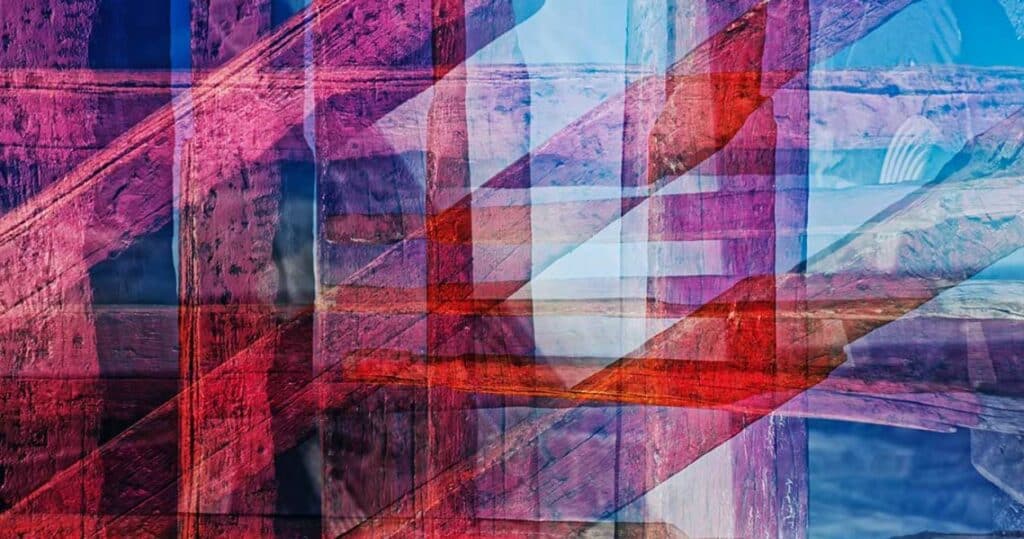We would like to welcome you to the entrancing realm of sound art, a place where creativity is not restricted by conventional limitations and where your auditory senses will be elevated to new dimensions. In this article, we dig into the works of ten extraordinary artists who have changed the very core of aural experiences through their respective musical compositions and performances.
These trailblazers have created sonic works of art that speak to the human spirit through a variety of mediums, ranging from immersive installations to experimental compositions. Let’s go out on an adventure to find out more about the unique soundscape that they have cultivated.
Climate change is one of the most pressing issues of our time, and it requires collective efforts to combat its devastating consequences. In addition to the significant roles that scientists, legislators, and activists play in resolving this global crisis, artists also make important contributions by using their creative talents to spread awareness and inspire action
Auditory Masterpieces of 10 Sound Art Pioneers
In the ever-evolving landscape of contemporary art, sound artists continue to push the boundaries of auditory perception, creating immersive experiences that challenge, provoke, and inspire. These ten artists have established themselves as forerunners in the field of sound art by their pioneering use of technology, different viewpoints, and experimental approaches. They have done so by inviting audiences to engage with the world of sound in deep and life-altering ways.
1. John Cage, 4’33”

4’33” is a work by John Cage that is considered to be one of the most iconic examples of sound art. The piece is divided into three sections, each of which lasts exactly 33 seconds. During this portion of the performance, the pianist is encouraged to refrain from playing the instrument, and the audience is reminded to pay attention to the sounds that are occurring around them. This work is a reflection on the noises of the world around us and the silence that often surrounds us.
Key Profile: John Cage, 4’33”
| Aspects | Description |
| Innovation: | Silent composition challenging the concept of music |
| Concept: | Emphasizes the ambient sounds of the environment |
| Influence: | Redefined the boundaries of experimental music |
2. Alvin Lucier: I Am Sitting in a Room

This piece by Alvin Lucier is a recording of a room played back into itself, with the delay time between the playback and the live sound gradually increasing. The composition conjures up a soundscape that is both unsettling and unearthly, and it investigates the nature of sound as well as perception.
Key Profile: Alvin Lucier: I Am Sitting in a Room
| Aspects | Description |
| Experimentation: | Explores the resonance of a room through recursive recording |
| Concept: | Highlights the transformation of sound in a specific space |
| Impact: | Pioneering work in the field of acoustic ecology |
3. Laurie Anderson – United States I-IV

A sarcastic and critical commentary on American society is created through the use of music, spoken word, and visuals in this performance piece by Laurie Anderson. The piece is a multi-media work that incorporates these elements.
Key Profile: Laurie Anderson – United States I-IV
| Aspects | Description |
| Multimedia: | Blends music, visuals, and spoken word in experimental performances |
| Concept: | Explores themes of technology, language, and identity |
| Influence: | Iconic figure in the intersection of art, music, and technology |
4. Max Neuhaus: Time Square Shuffle

Max Neuhaus designed this sound piece specifically for the lobby of the Pepsi-Cola building in New York City. The sculpture is made up of a number of microphones and speakers, all of which work together to magnify and warp the noises that are coming from the street outside, therefore producing a cacophony of urban noise.
Key Profile: Max Neuhaus: Time Square Shuffle
| Aspects | Description |
| Site-Specific: | Creates site-specific sound installations in public spaces |
| Immersion: | Engages the audience in interactive sonic experiences |
| Legacy: | Pioneer of sound installations in urban environments |
5. Janet Cardiff and George Bures Miller: The Walk

The “soundwalk,” which Janet Cardiff and George Bures Miller created, is an audio tour that takes visitors through a nearby park. The piece makes use of binaural audio to produce a realistic and immersive soundscape that leads listeners through the park while also telling them stories about the history and people of the location.
Key Profile: Janet Cardiff and George Bures Miller: The Walk
| Aspects | Description |
| Narrative: | Immersive audio walks blurring the lines between reality and fiction |
| Collaboration: | Combine visual and auditory elements in multimedia installations |
| Impact: | Transformative experiences engaging the audience’s senses |
6. Christina Kubisch, The Telephone Book

Christina Kubisch is the creator and creator of this sound artwork, which consists of a number of telephone books that have undergone various sonic manipulations. This piece investigates the connection between sound and language, as well as the various ways in which sound may be manipulated to convey a certain message.
Key Profile: Christina Kubisch, The Telephone Book
| Aspects | Description |
| Sound Sculptures: | Integrates technology and natural elements into her works |
| Environmental: | Explores the relationship between sound and space |
| Unique Approach: | Innovative use of materials and sonic experiences |
7. Bill Fontana, Sonic Sculpture

This sound sculpture by Bill Fontana consists of a series of microphones and speakers that are placed in natural settings, such as forests and deserts. The piece takes the sounds of the surrounding area and amplifies and distorts them, resulting in a soundscape that is stunning as well as peculiar.
Key Profile: Bill Fontana, Sonic Sculpture
| Aspects | Description |
| Urban Soundscapes: | Transforms public spaces into dynamic auditory environments |
| Technology: | Utilizes innovative techniques in his site-specific sound sculptures |
| Cultural Impact: | Redefines the perception of sound in urban contexts |
8. David Tudor, Rainforest IV

This sound installation by David Tudor consists of a series of amplified objects, such as chains, springs, and metal plates. The composition generates a soundscape that is erratic and unpredictably turbulent, and it investigates the relationship between sound and place.
Key Profile: David Tudor, Rainforest IV
| Aspects | Description |
| Electronics: | Experimented with electronic music and live electronic performances |
| Collaboration: | Worked closely with contemporary composers and artists |
| Avant-Garde: | Pushed the boundaries of sound and performance art |
9. Hitoshi Shimizu, Tank

Hitoshi Shimizu created this sound work, which is comprised of a water tank that is loaded with water and speakers that are amplified. The work generates a set of sounds that are reminiscent of the sea but also have an unearthly quality to them.
Key Profile: Hitoshi Shimizu, Tank
| Aspects | Description |
| Experimental: | Explores the intersection of sound, technology, and human experience |
| Sensory: | Creates immersive installations that engage multiple senses |
| Conceptual: | Challenges conventional notions of auditory perception |
10. Stephen Vitiello: Invisible Cities

This sound installation by Stephen Vitiello consists of a series of speakers that are hidden in different locations throughout a city. The work plays a number of sounds that are unique to the position of the speaker, which results in the creation of a soundscape that is at once recognisable and unfamiliar.
Key Profile: Stephen Vitiello: Invisible Cities
| Aspects | Description |
| Interdisciplinary: | Integrates sound into visual and multimedia installations |
| Nature-inspired: | Draws inspiration from natural environments and organic sounds |
| Contemporary Impact: | Influential figure in the contemporary sound art scene |
We salute the inventiveness and vision of ten famous artists who have brought the art of repurposing and rethinking commonplace materials to a higher level.These ten artists have shown us that there is extraordinary beauty to be discovered in the mundane, which forces us to reevaluate our assumptions and motivates us to view the world from a different perspective.
Sound artists continue to push the frontiers of aural perception in the ever-changing environment of modern art. As a result, they are able to create immersive experiences that are thought-provoking, provocative, and inspirational. These ten artists have established themselves as forerunners in the field of sound art by their pioneering use of technology, different viewpoints, and experimental approaches. They have done so by inviting audiences to engage with the world of sound in deep and life-altering ways.
FAQ
What is the definition of sound art?
The use of sound as a vehicle for artistic expression is at the heart of the expansive creative field that is known as “sound art.” It typically incorporates a wide variety of practises, including as installations, performances, compositions, and experimental audio works, with the intention of enveloping spectators in an experience that engages multiple senses.
What distinguishes sound art from music?
Although music and sound art both make use of sound in their creations, sound art frequently departs from more conventional musical forms and structures. Sound art places a greater emphasis on the conceptual, spatial, and environmental aspects of sound and investigates the ways in which sound interacts with space, technology, and the human experience, in contrast to music, which adheres to more predetermined melodic and rhythmic patterns.
How can an audience member participate in sound art?
Sound art may be a highly immersive and meditative experience. Audiences can interact with sound installations, see live performances, go on audio tours, and visit exhibitions that use sound as a primary medium. The goal is to embrace these experiences with an open mind, being completely present and receptive to the sensory factors at work.





